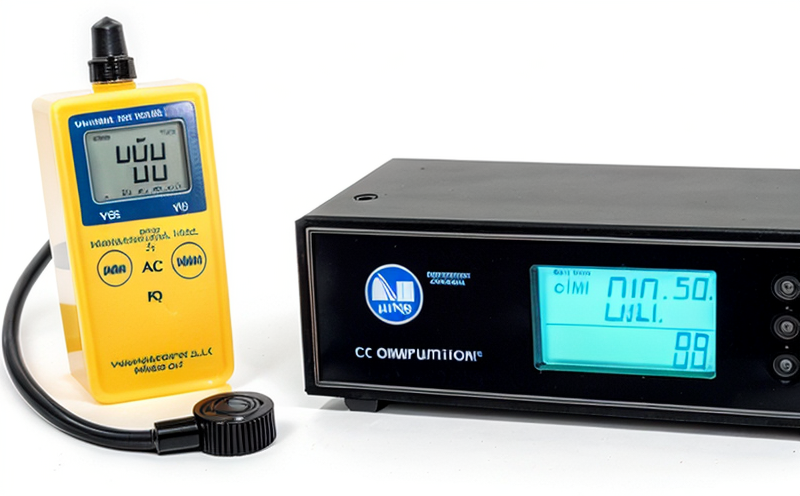Measuring VOC concentration in chemicals to ensure compliance with environmental regulations
Ensuring Environmental Compliance Measuring VOC Concentration in Chemicals with Eurolab
As the world becomes increasingly aware of the importance of environmental protection, businesses are under growing pressure to ensure their operations align with stringent regulations. One critical aspect of this compliance is measuring Volatile Organic Compound (VOC) concentration in chemicals. VOCs are a significant contributor to air pollution, and excess emissions can have severe consequences for both human health and the environment.
In response to these concerns, Eurolab offers a comprehensive laboratory service designed to help businesses measure VOC concentration in chemicals, ensuring compliance with environmental regulations. By partnering with Eurolab, companies can not only minimize their ecological footprint but also mitigate potential legal liabilities associated with non-compliance.
Why Measuring VOC Concentration Matters
Measuring VOC concentration is essential for several reasons
Regulatory Compliance Governments worldwide have implemented laws and regulations to control VOC emissions. Companies must demonstrate compliance by accurately measuring VOC levels in their products or processes.
Environmental Protection Excessive VOC emissions contribute to air pollution, which can lead to respiratory problems, cancer, and other health issues. By controlling VOC concentrations, businesses can help preserve public health and the environment.
Product Safety High VOC levels can affect product quality, stability, and performance. Accurate measurement ensures that products meet safety standards and are suitable for end-users.
The Benefits of Measuring VOC Concentration with Eurolab
Partnering with Eurolab offers numerous advantages
Compliance Guaranteed Our laboratory services ensure accurate VOC measurements, guaranteeing regulatory compliance and avoiding potential fines or penalties.
Data-Driven Decision Making Our expert analysis provides actionable insights, enabling businesses to optimize production processes, reduce waste, and minimize costs.
Enhanced Product Quality By controlling VOC concentrations, companies can create products that meet safety standards, improving customer satisfaction and loyalty.
Competitive Advantage Demonstrating a commitment to environmental responsibility and regulatory compliance can differentiate businesses from competitors and attract environmentally conscious customers.
Key Benefits of Measuring VOC Concentration
Here are the primary benefits of measuring VOC concentration in chemicals
Improved Air Quality By controlling VOC emissions, companies contribute to cleaner air, reducing respiratory problems and other health issues.
Reduced Regulatory Risks Accurate VOC measurements ensure compliance with regulations, minimizing potential fines or penalties.
Enhanced Product Performance Controlling VOC concentrations ensures products meet safety standards, improving quality and stability.
Cost Savings Optimized production processes and reduced waste minimize costs associated with product development and manufacturing.
Frequently Asked Questions (FAQs)
Q What is the process for measuring VOC concentration in chemicals?
A Our laboratory service involves collecting chemical samples, analyzing them using advanced equipment, and reporting VOC concentrations to clients.
Q How accurate are the measurements provided by Eurolab?
A Our laboratory follows strict quality control protocols, ensuring that all measurements meet international standards of accuracy and precision.
Q Can I measure VOC concentration in-house or should I outsource to a laboratory?
A While some companies may have the necessary equipment and expertise to measure VOC concentrations in-house, outsourcing to a specialized laboratory like Eurolab ensures accuracy, reliability, and regulatory compliance.
Conclusion
Measuring VOC concentration in chemicals is no longer optional for businesses. Regulatory pressures, environmental concerns, and product safety demands require accurate measurements. By partnering with Eurolab, companies can ensure compliance, protect the environment, and create products that meet safety standards. Dont risk non-compliance or compromised air quality choose Eurolabs laboratory service to guarantee VOC measurement accuracy and maintain a healthy relationship with the environment.
-
Testing the emission of volatile organic compounds (VOCs) from chemicals or materials
-
Assessing the VOC release rates of solvents, coatings, and adhesives
-
Determining the environmental impact of VOC emissions from chemicals used in manufacturing
-
Simulating real-world conditions to measure VOC emissions during product use or storage
-
Evaluating the potential health risks posed by VOCs emitted from chemicals and materials
-
Testing for the presence of specific VOCs such as benzene, toluene, and formaldehyde in chemicals
-
Assessing the reduction of VOC emissions through formulation changes or new chemical additives
-
Testing the impact of temperature and humidity on VOC release from chemicals
-
Determining the VOC content in consumer products, coatings, and paints
-
Ensuring that chemical products meet national and international VOC regulations for emissions
-
Testing how VOCs in chemicals contribute to indoor air pollution and their potential for toxicity
-
Evaluating the volatility of chemicals under different environmental conditions, such as high heat or direct sunlight
-
Measuring the impact of VOCs on air quality in confined spaces like factories and warehouses
-
Analyzing the effect of packaging materials on the emission of VOCs from chemicals
-
Testing the impact of VOC exposure on human health and safety in both industrial and commercial environments
-
Determining the compliance of chemicals with EPA and other regulatory standards for VOC emissions
-
Testing chemicals for VOC emissions using chamber methods, direct reading instruments, or laboratory analysis
-
Simulating VOC exposure scenarios to measure air quality levels and determine safe limits for chemicals
-
Testing chemicals in different forms (solid, liquid, gas) to assess VOC emissions at various stages of production and use
-
Evaluating the potential for VOC emissions to react with other materials, creating hazardous byproducts
-
Testing the efficiency of VOC removal systems, such as filters and scrubbers, used in industrial applications




